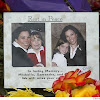CONCORD — A settlement has been reached in the lawsuit over the 2013 death of Charles Burns, shot and killed by two Concord officers after they showed up at his Antioch house to arrest him.
Details of the agreement have not been made public, but they are expected to be released if the Concord City Council approves the settlement during a closed session hearing on Feb. 27. Both sides of the suit have said they anticipate the council’s approval.

There are questions about what happened the day Burns was killed. The city of Concord’s official account — partially based on the testimony of a disgraced ex-K9 officer — is that Burns somehow lifted his head from the ground after suffering a gunshot wound to the top of his skull that experts say would have killed him almost instantly.
Attorneys for Burns’ family — who filed the suit in 2014 — say that the 21-year-old was shot several times as he stood with his hands raised, then fell to the ground, was mauled by a police dog, then shot in the head a final time as he lay motionless on the pavement. Both Concord officers who shot Burns testified he was running with at least one arm at his waistband when they opened fire.
In November, a judge threw out legal claims against the city of Concord, its police chief, and other defendants, but allowed the suit to proceed against six Concord officers, including Detectives Chris Loercher and Francisco Ramirez, the officers who shot Burns, and former K9 Officer Matthew Switzer, who released his dog onto Burns during the incident.
Attorneys for both sides, as well as city officials, declined to comment on the pending settlement.
Burns was shot on May 10, 2013, by officers in a Contra Costa drug task force coming to arrest him and others on suspicion of trafficking meth, following a lengthy investigation. Burns’ family has denied he was selling drugs.
Police attempted to pull over a truck containing the driver, Bobby Lawrence, and Burns, a passenger, on the 2700 block of Barcelona Circle in Antioch. The car pulled away a short distance, collided with a police car, and then Burns jumped out and tried to run away.
At that point, Loercher began firing his gun, and Ramirez, hearing the shots, fired twice at Burns. They testified that they believed he was reaching for a gun as he ran, but it was later determined Burns was unarmed. Attorneys for the city of Concord say all 11 shots were fired in a single volley.
Burns’ attorneys, though, say they have confidential witnesses — described only as neighbors in the area of the shooting — who dispute the city’s account and say there was a pause between gunshots.
The day Burns was shot, one woman who spoke to an ABC 7 reporter described the shooting as “boom, boom, boom, nonstop.” Another area resident told a KRON 4 reporter that he heard, “pop, pop, pop, pop, pop, then a delay, then a pop again.”
Burns was struck 10 times, including wounds to his chest and back, and one shot that entered through the top of his skull and traveled down towards his neck, cutting his brain stem and cerebellum, according to the coroner’s report. It is a wound medical experts say would have made voluntary movement impossible almost instantly.
Switzer testified in a pretrial hearing that he heard only a single volley of shots, and that he parked his car, exited, cleared with his sergeant that a K9 was needed, and ran to the scene. He said that he saw Burns lift his head off the ground, so he released his dog, who bit Burns for 10-15 seconds.
But Switzer, an officer who joined the force in 2001, has potential credibility issues. He lost his job the year following the Burns shooting, after it came to light he had been using his status as an officer to gain entry to peoples’ homes and steal prescription drugs from them. He was charged with five criminal counts, including burglary, and took a plea deal in May 2014 that required he serve six months in jail.
Last year, the city of Concord paid $150,000 to settle a suit by a man who claimed Switzer had used his dog to “maul” him. The settlement did not require the city of admit liability.
U.S. Magistrate Judge Lauren Beeler reviewed the claims against Switzer. In allowing the suit against him to proceed, she noted there was evidence that Burns could have moved in a way to suggest he was reaching for a weapon when Switzer saw him, but there was also evidence indicating Burns posed “little if any threat” to officers when the K9 bit him.
“A jury could reasonably find that when Officer Switzer deployed his dog, Mr. Burns had already been shot multiple times, was incapacitated and dying on the street, and no longer posed a threat…(and) the police nonetheless deployed a dog on him that attacked him for 10 to 15 seconds,” Beeler wrote. “Drawing all factual inferences in Mr. Burns’s favor, the court cannot say as a matter of law that Officer Switzer’s deployment of his dog and the force the dog applied to Mr. Burns was reasonable.”















No comments:
Post a Comment